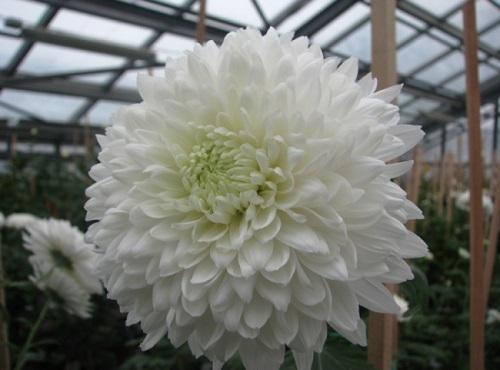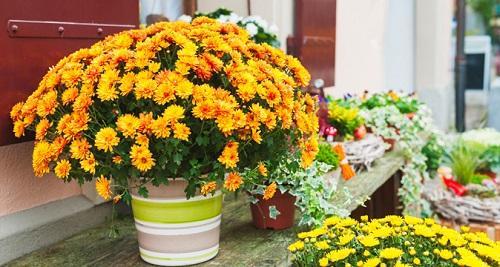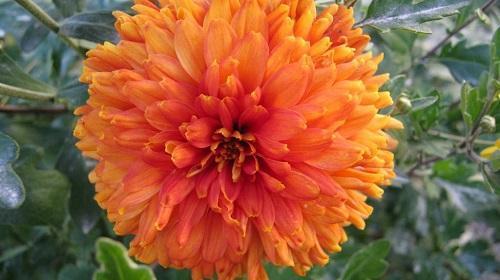Chrysanthemum indian
Chrysanthemum chrysanthemum is a plant with large flowers, which is grown most often indoors for cutting. Only early varieties of Indian chrysanthemums grow well in the flower bed. For example, the Gazelle chrysanthemum variety blooms in August, has a large, white double flower up to 17 cm in diameter, and the stem height reaches 90 cm.

To grow Indian chrysanthemums indoors, it needs to create favorable conditions in order to get a selective harvest of flowers. Particular attention should be paid to the temperature regime and lighting, watering and creating the required level of moisture, the correct selection of the soil composition and the timely introduction of top dressing, as well as pruning the bush.
Temperature support and suitable lighting

Indian chrysanthemum does not tolerate high temperatures. In order for it to bloom as long as possible, it is necessary to maintain the temperature at 10-15 degrees Celsius. In the summer, the pot should be placed in a darkened place that is well ventilated, and in the winter, the chrysanthemum should be stored at 5 degrees Celsius.
Since the flower reacts poorly to direct sunlight, eastern or western windows will provide a comfortable "living" for it.
But the lack of lighting will not benefit the chrysanthemum - it simply will not bloom, so the northern part of the house is not suitable for keeping plants.
Watering frequency and required humidity
Chrysanthemum is very fond of water, so it should be watered every three days as the top layer of the earth dries out. If you skip the next watering, then unblown buds, as well as open flowers, will begin to fade. At the same time, it is important not to overfill the plant so that it does not rot. For irrigation, it is better to use soft rainwater, and if this is not possible, then the tap water is defended for a couple of days.
To maintain the high level of humidity required by the chrysanthemum, it is periodically sprayed with purified water. For the same purposes, containers with water are placed next to it.
Chrysanthemum spraying is best done in the morning, and should be stopped by autumn.
Soil requirements and fertilization recommendations

The Indian chrysanthemum requires loose, nutrient-rich soil with neutral acidity. It is recommended to add sod (4 parts), humus (1 part) and sand (1 part) to garden soil (4 parts) for planting a flower.
For proper development and lush flowering, Indian chrysanthemums are fed twice a month:
- during the period of growing deciduous mass - nitrogen fertilizers;
- during the budding period - dressings, which include phosphorus and potassium.
Chrysanthemum pruning

The first pruning is done to form a beautiful bush - pinch the chrysanthemum two or three times (cut off the upper part of the shoot). This stimulates the growth of side shoots. It is worth considering that the last pinching is carried out two weeks before the plant begins to bloom.
The next pruning of the bush is carried out before placing the chrysanthemum in a dark, cool and dry room for winter storage. To do this, cut off all the shoots, leaving 10 cm.
Like its other relatives, the Indian chrysanthemum reproduces by sowing seeds (annual plants), as well as by cuttings or dividing the bush (perennial plants).